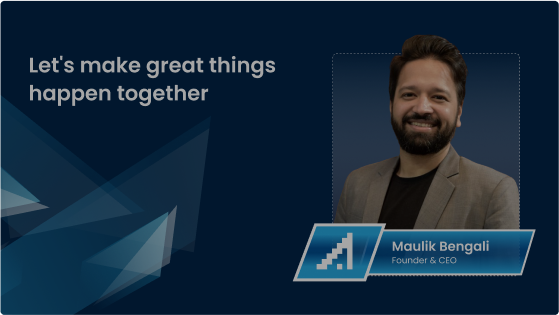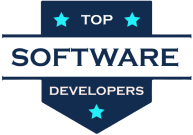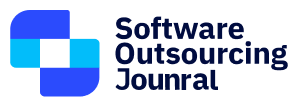As technology becomes a bigger part of our lives, we’re all getting the chance to pick the tech that fits our style, whether it’s for personal use or the daily grind at work. Mobile tech and software are the big shots in this game, and open-source software (OSS) is riding high on this wave. It’s gaining traction because it’s pocket-friendly and can pretty much match up to the fancier, pricier options.
The IT scene has witnessed some big open-source projects like Linux, Mozilla Firefox, and the GNU Compiler Collection. In fact, the open-source market was projected to soar past $32 billion by last year.
But, you know what’s strange? Despite all this growth, there are still naysayers dissing OSS, claiming it’s not up to par in terms of quality, security, and longevity compared to the high-end proprietary software.
Well, here’s the lowdown – there are some open source software myths floating around, and it’s high time we debunk them. Let’s clear the air on why these myths about OSS are, well, just myths.
Myth 1: Open source and proprietary software don’t play well together.

Fact: Open source was never intended to compete with proprietary software. Lately, many software developers have been implementing open source into new software packages in order to ensure that OSS works seamlessly with operating systems and other apps.
Granted, incompatibilities such as variances in data formats or other areas can occur with any software. Nonetheless, OSS integration is possible as long as the development is in place.
Myth 2: The students and enthusiasts create open-source software rather than “real” developers.
Fact: The following are some of the few developers who work on open-source software and bust one of these open source software myths:
- The Open Virtualization Alliance
- OpenStack
- OpenPOWER (a collaboration of IBM, Google, Mellanox, Tyan, and NVIDIA)
Open-source development encourages creativity. Many open-source supporters and computer science students contribute to projects by making pull requests and creating extensions and add-ons, but development is not confined to grassroots movements.
So, let’s put rest to one of the common open source software myths like this.
Myth 3: OSS is a nightmare in terms of legal, licensing, and copyright.

Fact: Using patents, licenses, and copyrights to “protect” software is complex. It can be difficult to know when to use it while still maintaining the open-source aspect of the project. Open-source projects use a variety of licenses to keep the project open to the public while still retaining copyright and patent protection.
The idea behind open source protection is that while the code for a program is freely available to the public, the software is given certain licenses to ensure it is secured against theft. Certain licenses provide you with many creative licenses when it comes to coding, but it’s ultimately your job to know what you can and can’t do and what you should and shouldn’t do.
Keep in mind that numerous open-source licenses, such as MIT, BSD, and Apache, are considered commercially friendly standards. Should you wish to establish a blacklist of licenses, prohibiting certain ones from broadening your developers’ options, you can achieve this by implementing automated policies through tools like Mend—an automated open-source management solution.
It’s important to bear in mind that while open source brings numerous advantages, it also carries a responsibility. So let’s reject one of the common open source software myths like this.
Myth 4: Linux is the only open-source operating system.
Fact: When people hear the word “OSS,” the first thing that comes to mind is that it only operates on the Linux operating system. Many open-source programs are built with Linux as a primary motivation. Hence, it is a quick and easy assumption to make. While open-source and Linux are frequently associated, open-source software is not limited to it.
You can produce OSS projects not just for Linux, but also for Windows and Macintosh operating systems. OSS also works on platforms other than these three, which makes sense given that OSS is, at its core, for everyone. So, let’s throw away this one of the common open source software myths from our system.
Myth 5: Open-source software is insecure compared to proprietary software.

Fact: Software security, whether open source or not, can be either excellent or terrible depending on how it is developed. Proprietary software may also be vulnerable. Other software packages may not be as secure as OSS.
This is where OSS benefits from having a diverse group of people engaged in its growth. You can invest in the supporters of a project to draw on a broader pool of knowledge about the project’s quality and overall security. When it comes to security, it’s critical to keep your data safe at all times, and because the source code is open source, anyone may contribute to making it more secure.
Instead of hiding security issues, the open source software myths busting community deal with them openly and informs users directly. On the flip side, creators of closed-off software are usually less clear about security problems. It’s not a guarantee that open source is always safer, but being aware of potential threats is one of its strong points.
Myth 6: There is no support for open-source software.
Fact: When you consider the scale of the open-source community (spoiler alert: it’s a worldwide movement), it’s difficult to pinpoint where this misconception originated. Help for open-source software differs from what users expect from other commercial software technical support types. Indeed, open-source products give you more support alternatives because assistance can come from anywhere.
Take Tidelift, a Boston-based company, for instance. They back up open-source software for big development teams like IBM, Oracle, and Red Hat, but with a twist. Instead of just using the software, they pay the independent open-source developers who make the packages their customers use to keep the code in shape.
This way, they can sort out problems right from the source. These partnerships allow companies to align their business needs with what open-source projects bring to the table. Plus, they get to chip in on creating new features that benefit the whole community.
Myth 7: Open-source software isn’t scalable.

Fact: The open-source software was not designed to be scalable, particularly at a corporate level. However, it has matured in many aspects to the point where it is similar to popular commercial choices.
This involves scalability as well. With today’s open-source software, developers may easily adapt projects to scale from tiny, single-user initiatives to large, corporate networks. Apache, ZFSonLinux, and WordPress are examples of successful OSS projects.
There is another way to make OSS scalable. You can adapt the number of dev teams and specialists from OSS projects to your business. What was once reality has become the concept of scalability in today’s OSS. Now, you can show this to face to those who believe in one of these open source software myths like this.
Myth 8: Open-source software isn’t meant for businesses.
Fact: What is enterprise software, exactly? A simple definition of enterprise is a dependable product that meets the needs and demands of a huge company. The licensing for OSS dictates how your company uses the software, and OSS projects frequently use corporate-friendly toolsets like JavaScript, SQL, and Ruby on Rails.
Then there are those large, enterprise-driven corporations that bust one of the most common open source software myths like this:
- Department of Defense
- New York Stock Exchange
- Amazon
- National Security Agency
- General Services Administration
- Virgin America
- Dreamworks
- National Aeronautics and Space Administration
Myth 9: Managing open-source software is overly complicated.

Fact: This is another one of the most prevalent open source software myths that suggest that only tech enthusiasts participate in and rely on open-source technologies due to their complexity and difficulty in maintenance.
However, major tech industry leaders, including Oracle, Amazon, and Google, actively contribute to and enhance open-source solutions. Despite requiring some level of engagement, open-source contributions are well-documented and traceable, ensuring transparency and user-friendliness.
Myth 10: Free software is not necessarily open source and vice versa.
Fact: When commercial software is distributed for free, it doesn’t automatically become open-source unless it’s accompanied by an open-source license. If it’s just given away without such a license, you can only use it for your own needs, but you don’t have the freedom to tweak or share it like true open-source software.
Here’s the catch – many projects on GitHub lack an open-source license. Even though they’re public, they aren’t truly open-source. That means commercial software companies can’t legally use, modify, or redistribute them.
The absence of a license implies default copyright laws are in play, and the original author retains all rights to their source code. Others can’t reproduce, distribute, or create new versions without permission.
Myth 11: The OSS code is chaotic and undocumented.
Fact: Open-source software (OSS) projects are often labeled as “development by committee” because they involve input from the community. However, this perception is not entirely accurate.
While open-source projects indeed thrive on public contributions through pull requests, it’s essential to recognize that all pull requests undergo scrutiny and approval by project managers. Contributions are thoroughly tested, assessed, and then given the green light, but the decision to merge isn’t mandatory; some contributions may be declined.
Despite the process’s diligence, it’s not foolproof. Disagreements among project managers, whether on merges, the project’s direction, or personal differences, can lead to challenges in OSS projects. Effective communication between project managers is crucial to navigating such situations and preventing issues from arising within the project.
Conclusion: Open source software myths busted!
We believe the debate about whether open-source software (OSS) is suitable for businesses is settled. With open-source technology driving the global digital transformation, we can now say, “Open-source is taking over the world,” echoing Marc Andreesen’s famous statement, “Software is eating the world.”
Talking about the security of open-source software, it’s important to know that in OSS, the code is open for everyone to see. This transparency boosts security by having more people look at the code and work together to improve it. It also helps security communities and researchers find vulnerabilities more easily.
Remember, to keep an organization safe from security issues, it’s crucial to follow the best practices and guidelines for security in all types of software—whether it’s used in production, commercially, or in open source.
At Ajackus, we believe in the facts rather than open source software myths. Open source stands on the principles of collaboration, delivery, reflection, and improvement. These are similar to that of the agile model.
To learn more about how we can help you with software development, get in touch with us.

Start a Project with Ajackus











































































